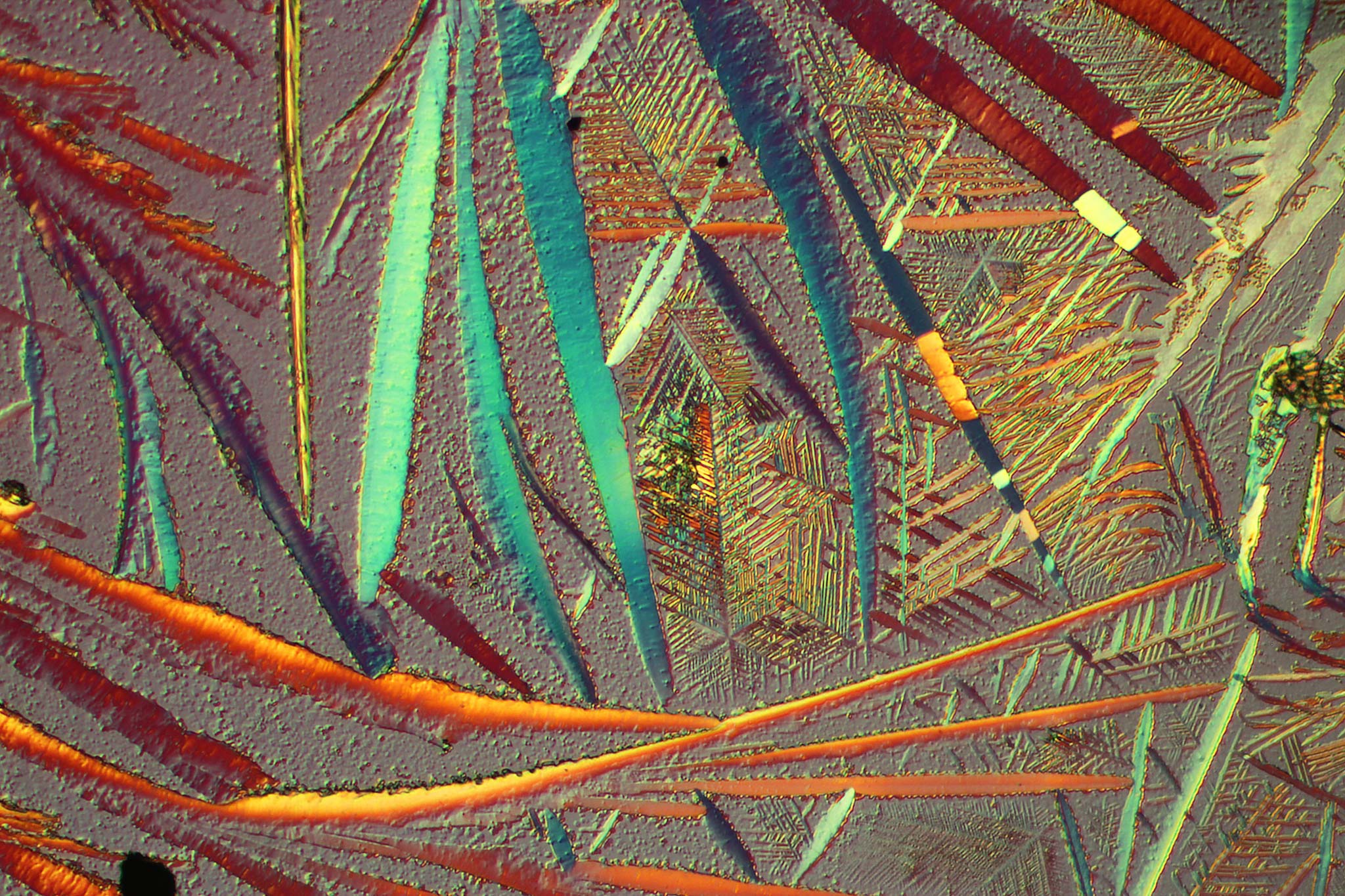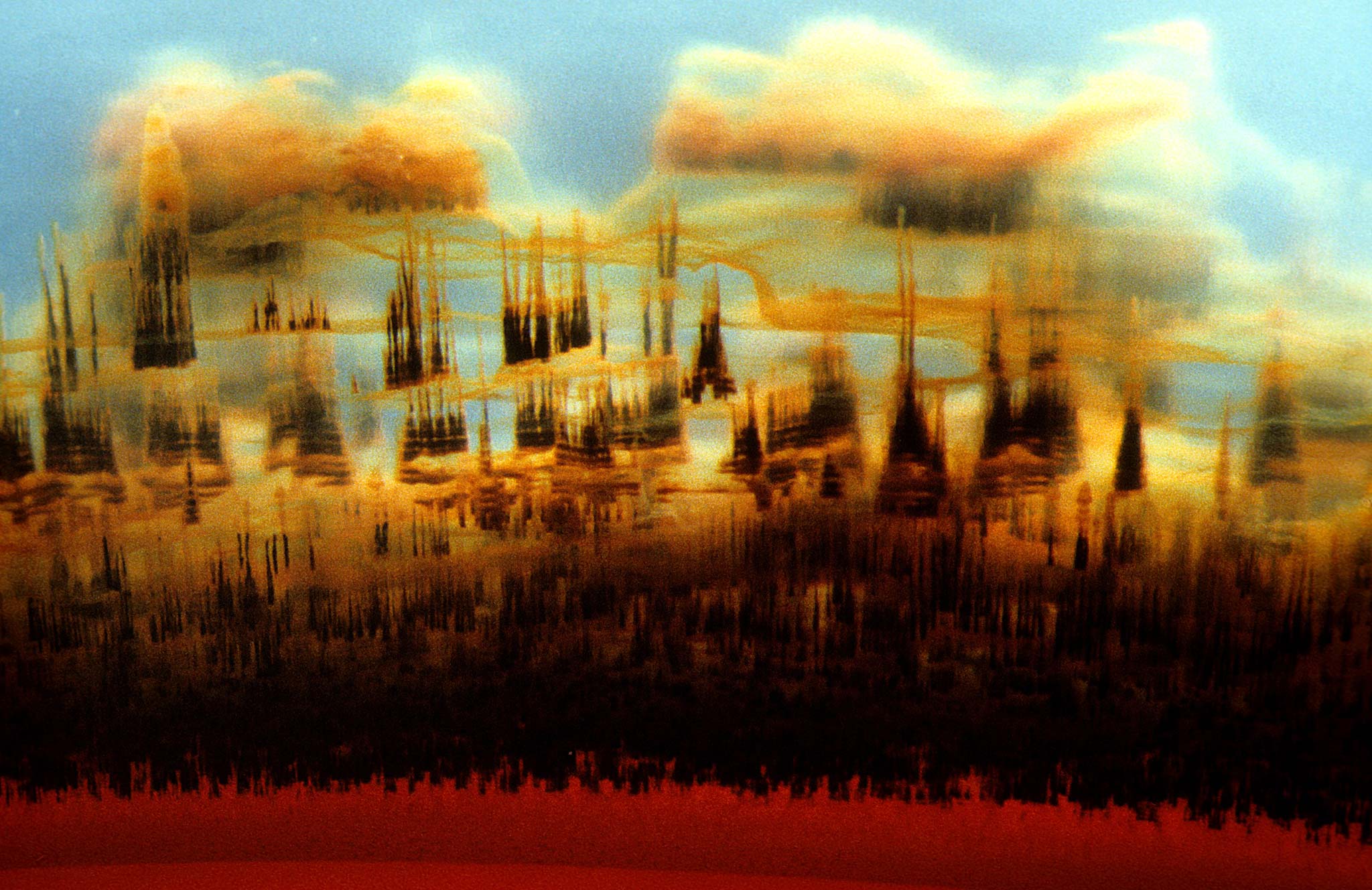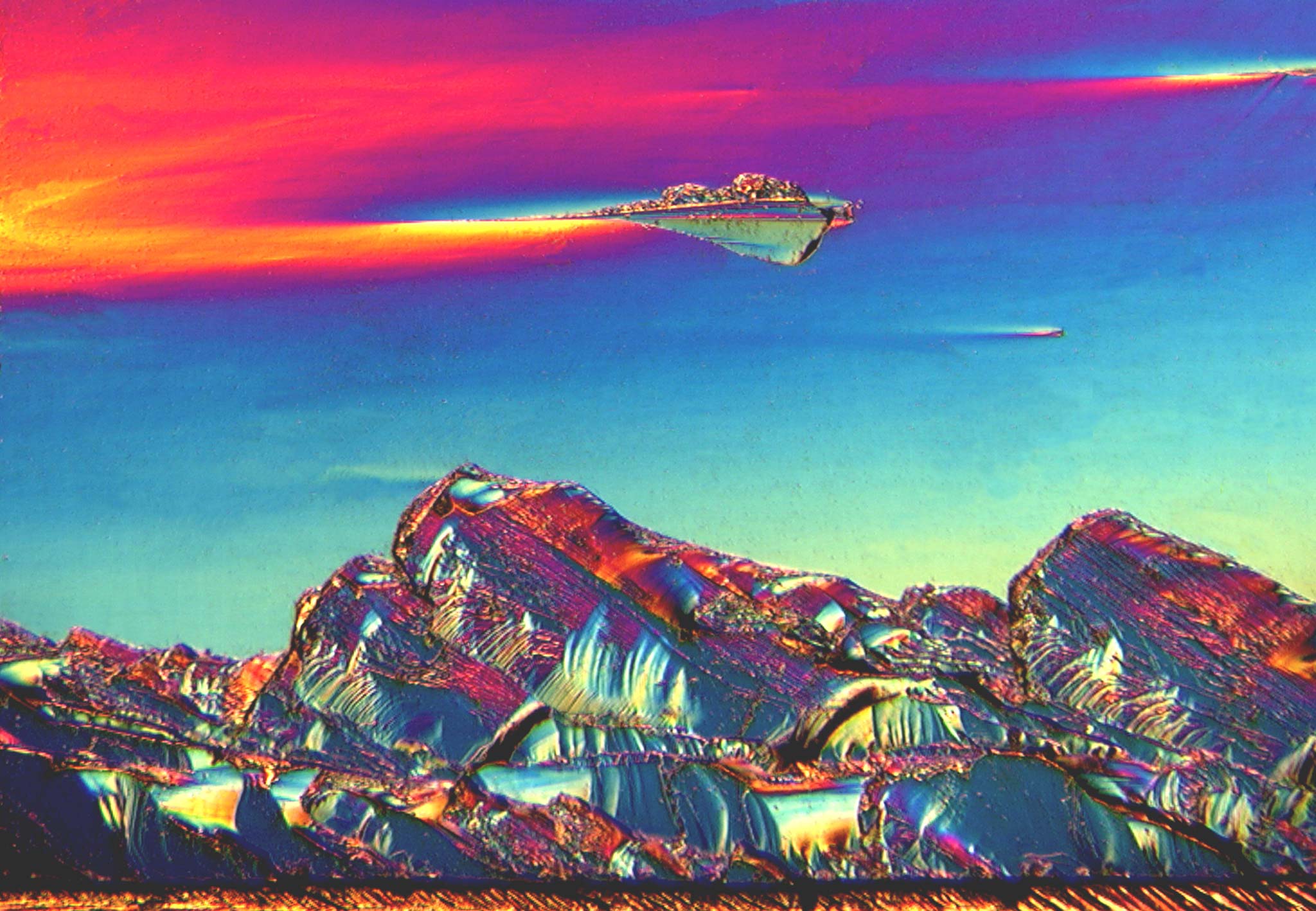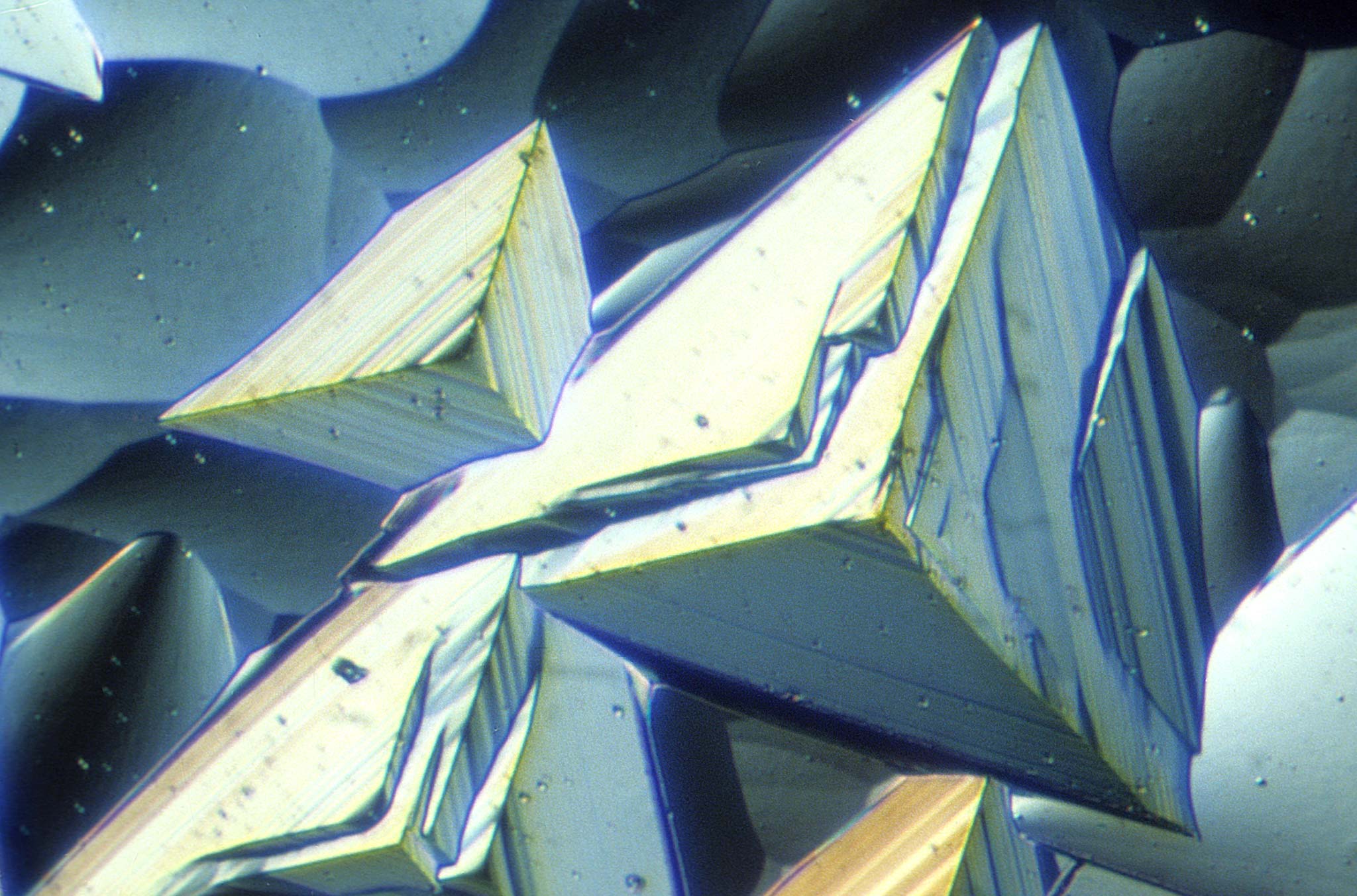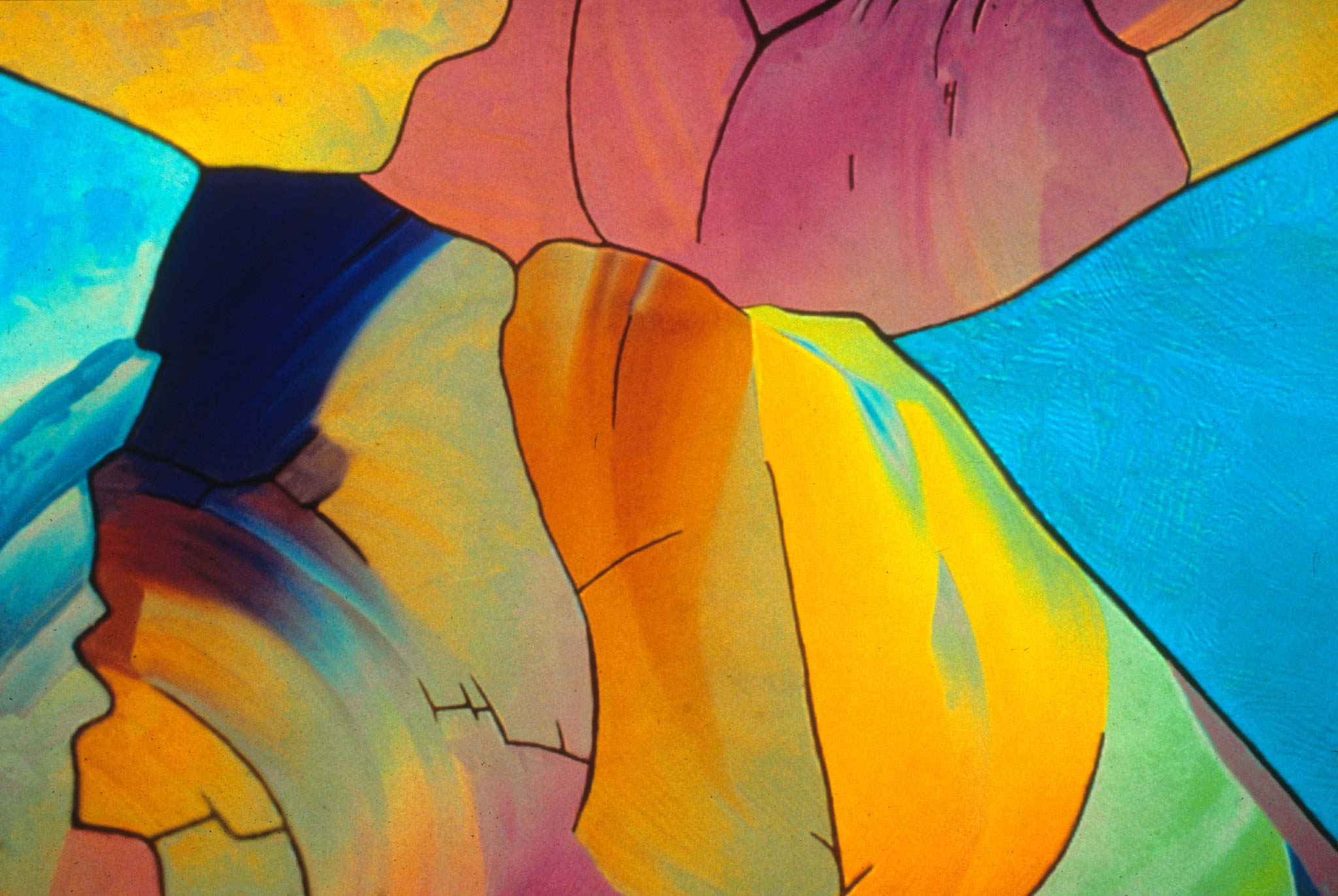by Brooks Riley
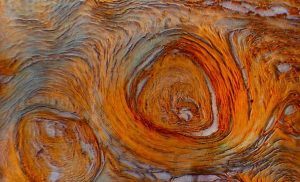
Sometime in the late Fifties, Roman Vishniac, a pioneer of photomicrography, picked up a knife, cut a thick horizontal slice of skin from his own thumb and photographed it under a microscope using polarized light. The resulting image succeeded on two levels: the scientific parsing of human skin’s rich textural terrain; and the chromatic revelation of natural beauty at a visual scale heretofore inaccessible. By subjecting himself to that brief ouch, he was able to expose the intricacies of the body’s largest organ and dramatize a new frontier of optical exploration that would grow exponentially as the technology became more sophisticated. Since then, the dual roles of photomicrography—contributing to scientific investigation, and unveiling eye-popping, artistic devils in the details–has expanded, yielding hidden treasures of a microcosmic universe so populous and dense that the planetary universe of outer space seems paltry by comparison. In some ways this universe of the tiny is more forthcoming than outer space with its endless stretches of nothingness between the orbs.
It is almost impossible to contemplate infinity without feeling infinitesimal. The paradoxical effect of trying to wrap our brains around something as vast as the universe is the realization that we will always be tinier than the tiniest subatomic particle. Compare it to a single cell inside our own bodies trying to fathom the infinity of its host. Infinity makes us giddy.
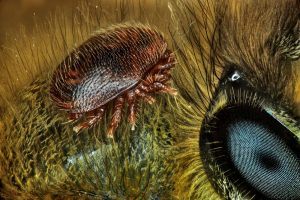
The reach for infinity usually moves toward outer space and all those unimaginable yonders out there. But what of the other direction, the ‘infinitesimals’ around and under us, so much smaller than our own miniscule selves? What to make of the recently estimated 23 billion tons of microscopic life at ground level and below our feet, packed together like canned sardines in neighborly proximity to us? This macrograph of a mite on a honey bee isn’t a spectacular image, but it does suggest reverse infinity: Is there a mite on the mite? If so, is there a mite on that mite? And so on.
It’s not necessary to go deep in this direction to make head-turning discoveries. Technological advances in photomicrography allow us to see far into the invisible world of living organisms and matter, to enter a riotous realm teeming with diversity. As Henry David Thoreau said, ‘Heaven is under our feet as well as over our heads.’ At this end of the infinity spectrum the sheer density of geological and biological matter within a relatively small space contains multiple worlds for exploration, edification, and aesthetic experience, at all levels of magnification.
If drone photography is about optimal framing of a terrain from above, the showy side of photomicrography could be described as a dazzling fashion shoot. The frame becomes secondary to the object of desire. If the drone photographer is a curator, then the photomicrographer is a stylist, dressing his client in the best possible light for his close-up. The use of color fluorescence, or fluorophores which artificially embellish the wee celebrities, are, at the scientific level, tools of differentiation, a form of color-coding, allowing scientists to separate properties, functions and substances within a given image. The aesthetic bi-products of these interventions span a cultural swath all the way from Las Vegas and pop culture to MOMA-worthy abstract art, including detours to Hollywood’s CGI animation studios (with monsters no human imagination could possibly conceive). Nikon recognized the potential appeal of this field early on with an annual competition that goes back more than 40 years, Nikon’s Small World.
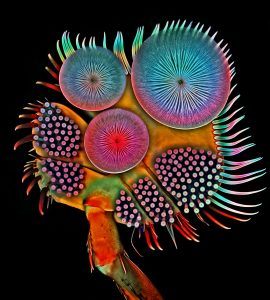
Of all the optical technologies for microscopic study, none is more spectacular than the confocal laser scanning microscope, the instrument of choice for many of the participants in Nikon’s competition. Invented by Marvin Minsky (before he moved on to other pinnacles), confocal technology provides details impossible to achieve with lens-based technology. To understand its capabilities, consider the male diving beetle (acilius sulcatus), specifically the underside of his front tarsus, exposed most spectacularly in the work of Igor Siwanowicz, a Polish-born neurobiologist whose extracurricular interest in mantises led him first to photomacrography (extreme close-ups of tiny, but visible subjects), and then eventually down into the hidden, subvisible depths of confocal photomicrography where he has accessed the entire color spectrum to achieve startling, exacting images of his subjects.
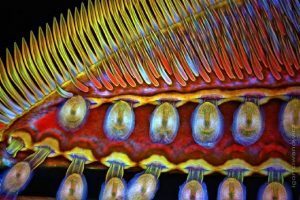
That male beetle is less than an inch long, which relegates his front feet to the domain of photomicrography at whatever level or technique of magnification. The graphic splendor of Siwanowicz’s image, the exotic night-blooming flower we take it to be before reading the fine print, is nearly upstaged when we learn that the suction cups (only one of the intricate functional mechanisms displayed in the image) serve one purpose only, to keep the male from sliding off the back of the female when mating.
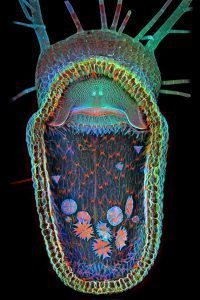
Another of Siwanowicz’s celebrities, the humped bladderwort (utricularia gibba) is a carnivorous plant he retrieved from a pond in Virginia not far from where I grew up. Measuring in at a whopping 1-2 millimeters, the plant’s trap metamorphizes into a photogenic killing machine of extravagant complexity under the photomicrographer’s scrutiny. The desmids it preys upon, seen languishing in its maw, are even tinier—animal-like organisms whose multiple shapes are formal enough to show up on any European coat-of-arms.
With all that color dominating the field, sometimes less becomes more, and more of a surprise, as demonstrated by this enchanting, monochromatic capture of the tracheoles (respiratory tubes) of a European honey bee, by Dr. Lorenzo Domenis. The twisting trunks of trees in a classic Japanese woodblock print could not look more artistic than this:
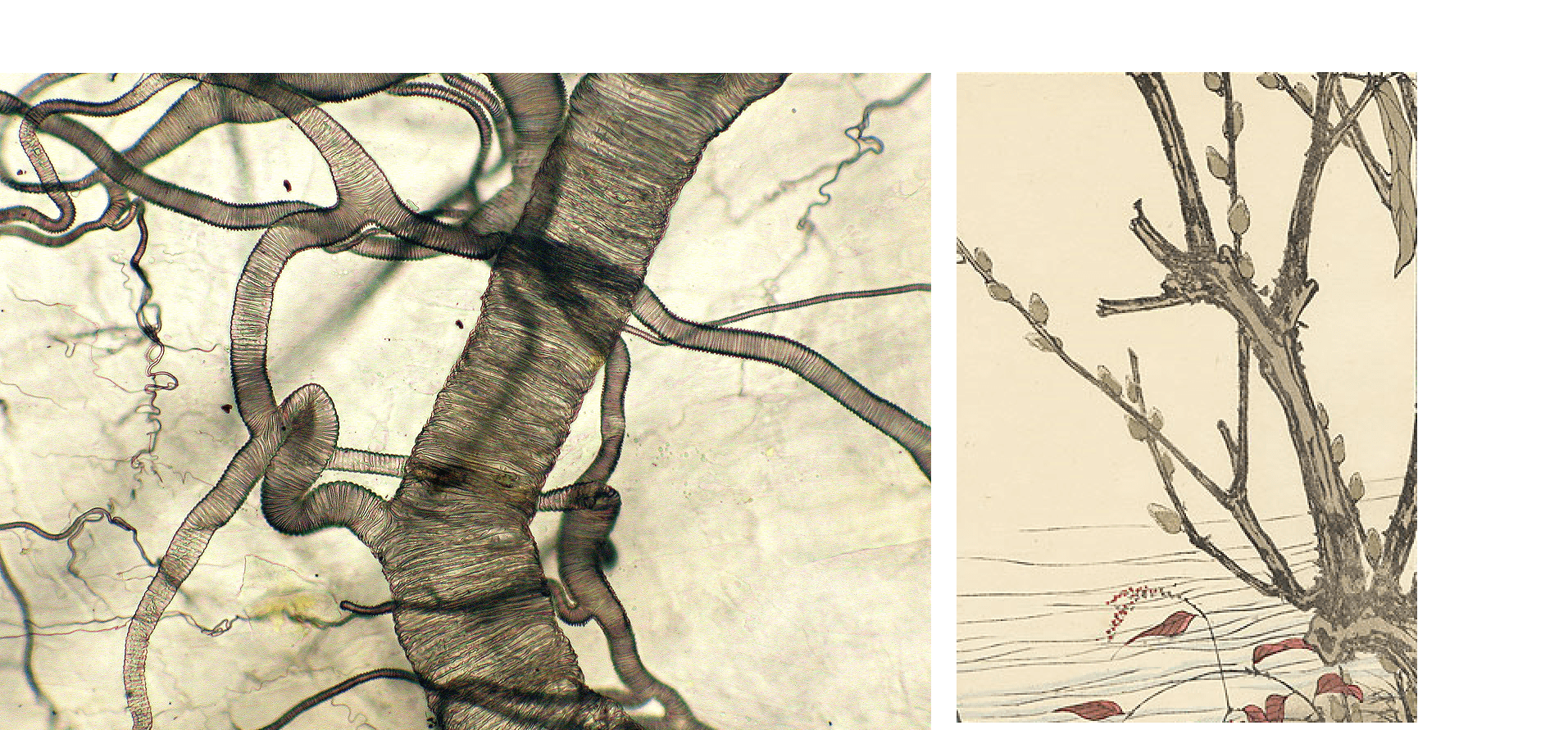
Art of another, more abstract kind can be seen in the photomicrographs of inanimate materials such as chemical compounds, minerals, acids and biochemical substances. The advantage of working with these materials is that they often come with their own luminescence and colors that emerge under certain lighting conditions. This is where abstract beauties strut their stuff—with colors and color combinations, with luminosity, with dynamic structural complexities and confounding geometrical constructions, and with textures and surfaces both strange and familiar. Who would have thought that a crystal of battery leakage could look like an embroidered tapestry? A kinship with drone photography can be found in the need for optimal framing in these works. Lighting conditions can alter multiple aspects of the substances so that the photomicrographer must also cull or curate the images out of a diverse array of visual effects.
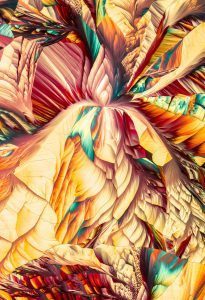
Some exciting works in this category were accomplished far from the high-tech labs of scientific research. Justin Zoll crystallizes amino acids, vitamins, aspirin, and other mundane substances at home and produces his images by attaching the camera to a simple high school microscope he bought on eBay and turning on the lights. Depending on your point of view, his works can seem like decorator samples for Prince of Chintz Mario Buatta, or Georgia O’Keefe on steroids.
Landscapes and cityscapes abound in the crystalline realm of photomicrography, some of them evocative of well-known painters. It’s not difficult to spot the work of Lionel Feininger in this micrograph of doxorubin in methanol and dimethylbenzenesulfonic acid by the late Lars Bech, a frequent winner at Nikon’s Small World, who managed to channel a variety of painterly styles in his chemical works.
Most of the ‘landscapes’ in this genre are delightfully eerie, such as the mountainscape with ‘snow’ at the bottom and bare ‘earth’ at the top. One work looks like a smoggy city at dawn; another like the Alps on acid. This lookalike effect is an important aspect of photomicrography’s appeal, as tiny shocks of recognition jog our memory of similar, unrelated images from our own macro scale of vision.
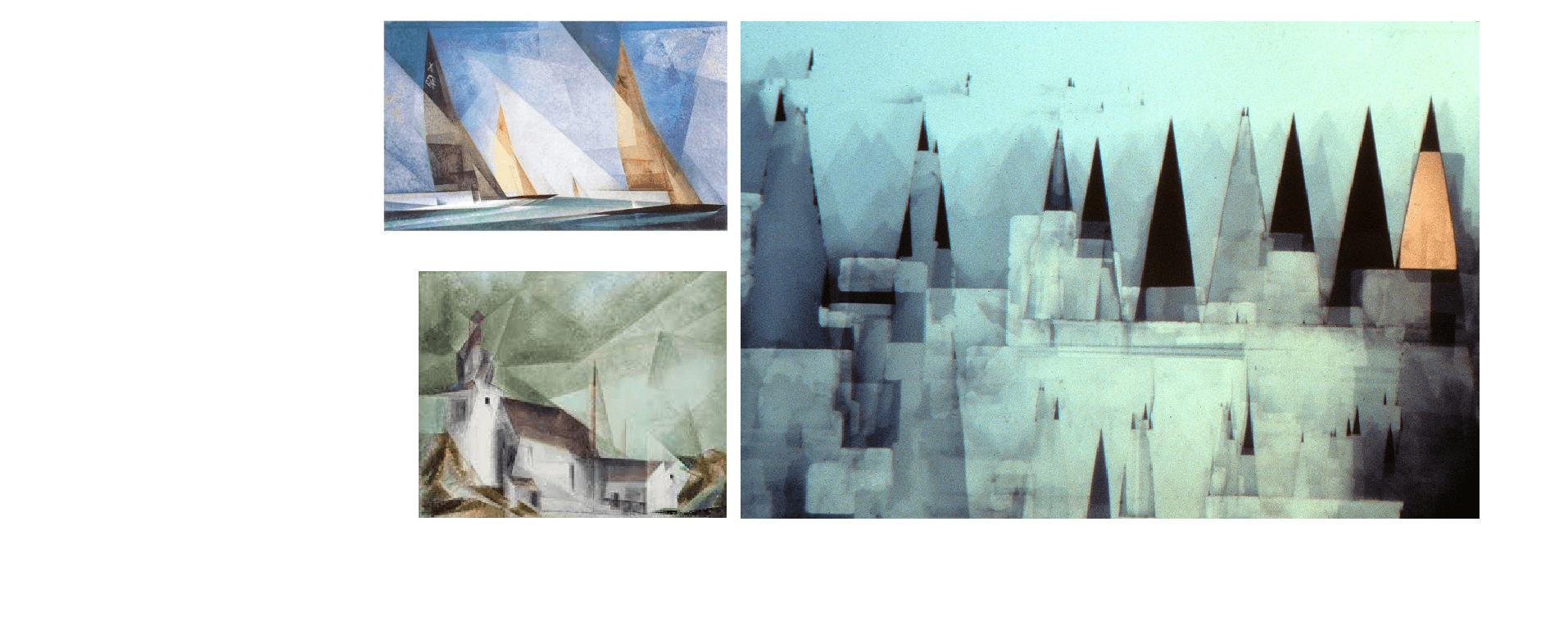
Unlike drone photography, with photomicrography it’s harder to separate the art of a subject from its scientific properties. Many of the biological images function on the level of illustration or graphic design rather than art. And yet, the knowledge that these graphics are generated from non-human sources is enough to elicit an aesthetic reaction even of the lowest order. The aesthetic punch here is something new, incorporating the duality of the image as both mysterious (art) and revelatory (science).
As Siwanowicz sees it: ‘Although it is not the primary objective of scientific visual data, surprisingly many research-related images have aesthetic merit; to fully appreciate the beauty of those often abstract and surreal forms one needs to approach them with an open mind.’
The only man-made canvases I can think of that approach this duality are the works of Anselm Kiefer, whose art astounds at the primary level of aesthetic impact, and simultaneously draws us inexorably into the properties of the materials he uses—their implied brutality, their fragility, their complicated metaphorical physicality—the supporting players in the thematic impulses of his work.
So close in, it becomes even more apparent that nature operates on algorithmic principles, its matter programmed for repetitions and patterns that occur according to plan, its architecture addressing specific issues just like ours does, its designs turning function into surprising form and texture. A multifunctional beetle foot demonstrates just how all those different algorithms can peacefully coexist, fitting themselves neatly into a gestalt without crowding, or cancelling, each other out. It makes you wonder: What if nature is merely an AI experiment carried out on a random blue planet like ours, by an alien intelligence? A god-player like ourselves? Is this why things can and do go wrong? Algorithms are only human after all…or natural…or alien.
‘’Nothing’s new under the sun.’ This old warhorse should finally be put out to pasture in light of our closer scrutiny of nature’s genius. The little shop of wonders we can now access is nothing compared to what remains to be discovered and documented for posterity, requiring many more lifetimes than we probably have left on this earth. Will this be the age of postmodern Romanticism, glorifying nature in a new dimension that slowly opens its cabinet of tiny curiosities for us to see? Is there a new aesthetic afoot which fuses the ‘aha’ of aesthetic experience with that of scientific wonderment? According to Vishniac, ‘Philosophically speaking, there’s no difference between art and biology.’
Dante Alighieri goes further: ‘Nature is the art of God,’ (or that god-player out there in the ether). Thanks to micrographic technology and its visionary disciples, we‘re one step closer to seeing what he means.
This is the second of two articles on new ways of seeing. The first can be read here.
Explore the archive of Nikon Small World winners here.
* * *
